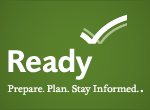The Media’s Role in a Crisis, Disaster, or Emergency

One of your most important communication partners during an emergency is the media. Don’t be nervous to work with the media! The media serves as an emergency broadcast system to get vital information to the people who need it most. During the beginning of a crisis, reporters are less concerned with investigative journalism or making stories more dramatic. They, and their audience, are more interested in knowing what happened and how to stay safe.
Here are some ways to make the most out of your relationship with the media to effectively communicate in an emergency.
- Establish relationships with your local media agencies before a disaster.
- Provide all media outlets with the same information at the same time.
- Attempt to give reporters a reasonable timeframe to expect new information updates.
- Understand journalism deadlines and work to accommodate them. During a crisis, it is important to be available—if necessary, around the clock—to help reporters get the facts right before their deadline.
As communicators, you and the media share the same goal during an emergency: getting reliable, updated information out first and reaching the most people. The 24-hour news cycle is a great way to draw public attention to the issue and provide key safety messages in real-time. Like you, reporters have a job to do and have deadlines to meet. Meeting your deadlines can save lives and a strong relationship with media can help make that happen.
For more resources and information on CERC, please see Crisis and Emergency Risk Communication, 2014 Edition or Crisis and Emergency Risk Communication Pandemic Influenza, 2007.
Have you used CERC in your work? To share your CERC stories, e-mail cercrequest@cdc.gov. Your stories may appear in future CERC Corners.
- Page last reviewed: April 21, 2017
- Page last updated: April 21, 2017
- Content source:
- Maintained By:





 ShareCompartir
ShareCompartir